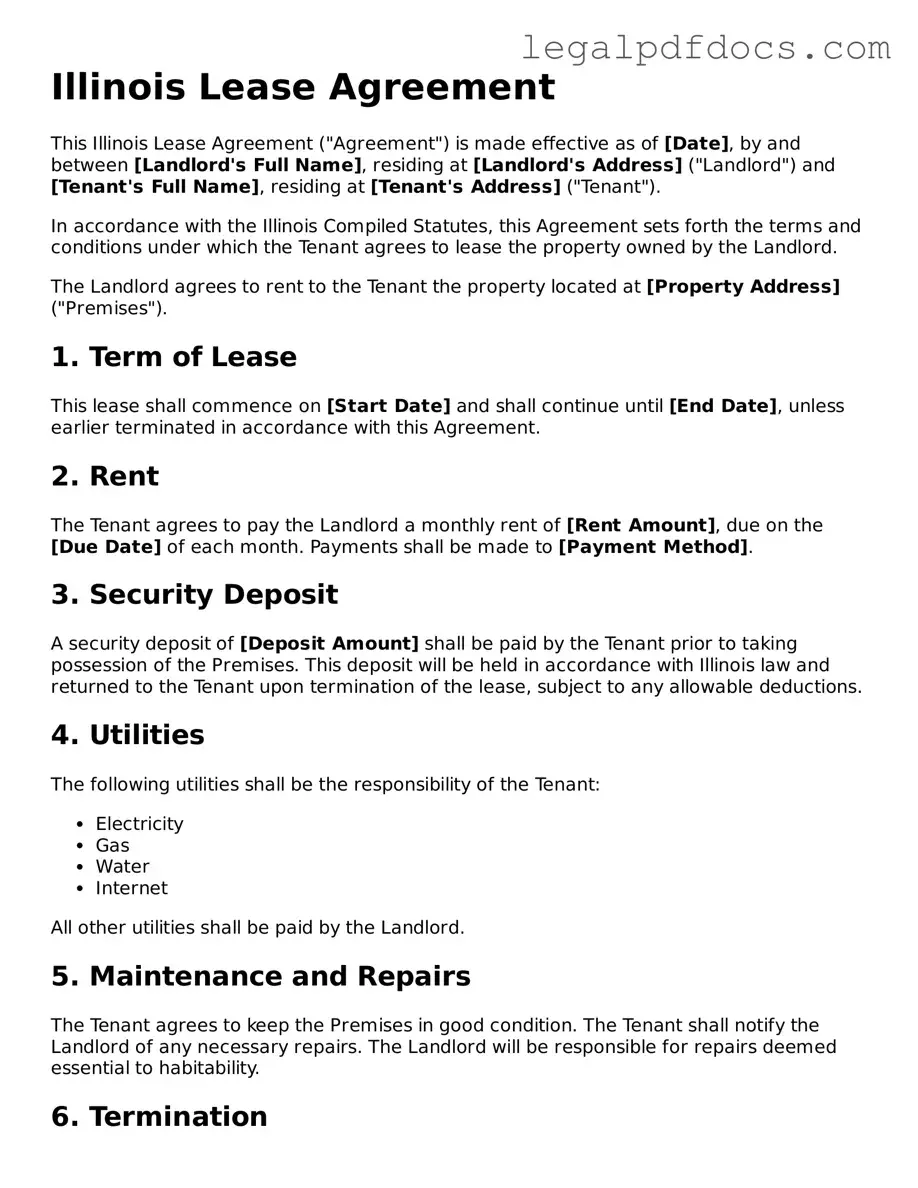Official Lease Agreement Form for Illinois
The Illinois Lease Agreement form is a legal document that outlines the terms and conditions between a landlord and a tenant for renting residential or commercial property in Illinois. This form serves to protect the rights of both parties and ensures a clear understanding of their obligations. For those looking to secure a rental arrangement, filling out the form is essential; click the button below to get started.
Open Lease Agreement Editor Here
